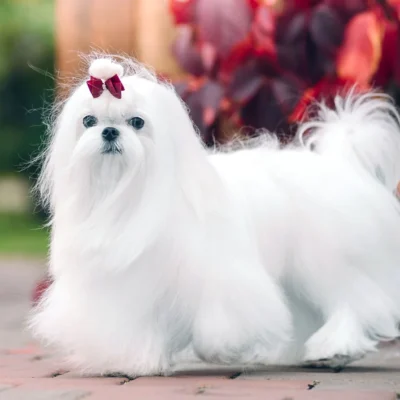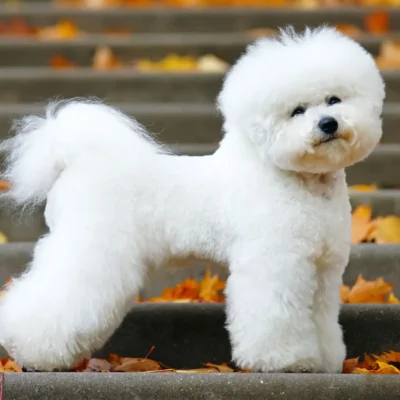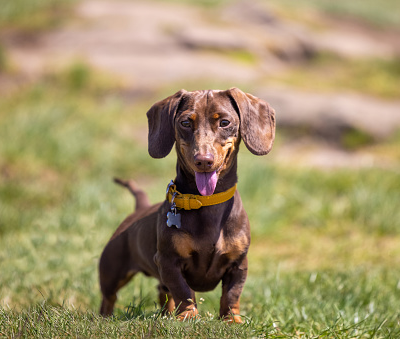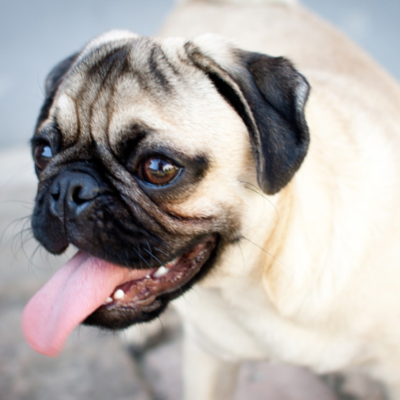
Looking for a little dog with a huge personality? Say hello to the Pomeranian — or as their friends like to call them, the Pom! These fluffy, pocket-sized dynamos are more than just adorable faces; they’re packed with intelligence, spirit, and enough charm to steal your heart in a single glance. With their plush coats and twinkling eyes, Pomeranians look like living, breathing teddy bears — and trust me, resisting their cuteness is practically impossible.
You might hear them called Dwarf Spitz, Loulou, or Zwergspitz depending on where you are in the world, but no matter the name, one thing’s for sure: these little dogs are smart. Incredibly quick learners and eager to please, Poms love to show off their cleverness. They’re curious, alert, and surprisingly good at playing watchdog — but don’t worry, their protective streak comes with a friendly, outgoing vibe that makes them a joy to be around.
If you’re dreaming of a furry companion who’s as sweet as they are smart, the Pomeranian might just be your perfect match. Behind that tiny frame is a heart full of love, loyalty, and an infectious zest for life that’s impossible not to adore. Get ready for endless fun, laughter, and cuddles when you welcome a Pom into your family.
Ready to dive deeper? Scroll down to discover important facts and characteristics about these delightful little fluffballs!
| Attribute | Details |
|---|---|
| Same As | |
| Breed Type / Mix | Purebred |
| Life Span | 12-16 yrs |
| Training | Determined |
| Shedding | Regularly |
| Energy | Moderate Energy |
| Temperament | Affectionate, Alert, Calm, Gentle, Intelligent, Sociable |
| Adult Weight | 4-7 lbs |
| Adult Height | 8-11 in |
- Breed Names: Also known as Pom, Dwarf Spitz, Loulou, and Zwergspitz.
- Smallest Spitz: Descended from large sled dogs, Pomeranians are the smallest members of the Spitz family but retain their ancestral resilience.
- Friendly Nature: Sociable but benefits from proper socialization to ensure confidence in new situations and around other animals.
- Distinctive Appearance: Recognized for their foxy face, bright eyes, fluffy double coat, and plumed tail.
- Variety of Colors: Found in a wide range of colors, including white, black, orange, brown, grey, and more.
- Excellent Watchdogs: Naturally alert and protective, they are quick to sound the alarm when something seems off.
- Highly Intelligent: Quick learners with curious personalities, they excel at picking up tricks and commands.
- High Energy: Energetic and playful, they thrive in active environments with plenty of stimulation.
- Grooming Needs: Require regular brushing, bathing, and occasional trims to maintain their fluffy double coat.
- Therapy Dogs: Their friendly, empathetic nature and small size make them ideal for therapy work in hospitals, nursing homes, and more.

Pomeranians are proof that big personalities can come in small packages. As one of the smallest purebred dog breeds, these compact companions stand just 6 to 7 inches tall at the shoulder and typically weigh between 3 and 7 pounds. Despite their petite frame, Pomeranians are remarkably sturdy and resilient, embodying a robust build that defies their size.
Fox-Like Features
One of the most defining traits of the Pomeranian is its fox-like appearance. Their almond-shaped, dark eyes sparkle with intelligence and curiosity, while their small, erect ears are set high on their heads, adding to their alert and inquisitive demeanor. This distinctive expression, paired with their sharp features, gives Poms their signature foxy charm.
Signature Tail
Perhaps the most recognizable feature of a Pomeranian is its tail. Poms carry their plume-like tails arched gracefully over their back, the fur fanning out in a stunning display. This iconic tail begins curling upward shortly after birth and develops into the breed’s trademark plume by the time they’re a few months old.
Compact Yet Agile
Though small, Pomeranians possess a muscular, well-proportioned body with a level back and a slight tuck-up. Their compact frame doesn’t limit their energy—these spirited dogs are surprisingly agile and love physical activity, showcasing more endurance and enthusiasm than their size suggests.
Luxurious Coat
The Pomeranian’s crowning glory is its double coat, which creates their iconic fluffy silhouette. The dense, short undercoat provides warmth and insulation, while the longer outer coat stands off the body, giving Poms their voluminous and glamorous appearance.
This luxurious coat comes in an impressive array of colors. While white Pomeranians are particularly eye-catching, the breed’s color palette spans from classic orange, black, and cream to less common hues like blue and sable. Many Poms even display unique patterns or blends of colors, making each dog a one-of-a-kind beauty.
Shedding and Grooming
As with all double-coated breeds, Pomeranians shed year-round, with heavier shedding occurring during seasonal coat changes. Regular grooming is essential to keep their fur in top condition, manage shedding, and prevent matting. Consistent brushing not only maintains their coat’s luster but also helps control the inevitable fur tumbleweeds in your home.
A Breed of Individual Beauty
Whether pure white, richly sable, or vibrantly orange, Pomeranian puppies come in a kaleidoscope of colors and patterns, ensuring no two Poms are exactly alike. Combined with their bold personality, fox-like elegance, and fluffy allure, this breed is undeniably captivating, making them a beloved choice for dog enthusiasts worldwide.
Pomeranians, with their bold and outgoing personalities, are a breed that never fails to make an impression. When we talk about a dog’s temperament, we refer to its innate traits and how it interacts with people and other animals. These qualities, influenced by genetics and environment, shape each dog’s individual personality.
Bold and Confident
Despite their small stature, Pomeranians exude confidence and a sense of boldness that is often unexpected from a dog of their size. Their curiosity and adventurous spirit make them eager to explore new places and meet new people, leading them to be highly extroverted. This fearlessness adds a layer of excitement to their personalities, making them fun and engaging companions.
Intelligence and Independence
Pomeranians are also known for their sharp minds. They are quick learners, grasping commands and solving problems with ease. This intelligence is paired with a bit of independence, which can sometimes manifest as stubbornness. However, this only adds to the breed’s charm and individuality. Their cleverness can sometimes lead to a little mischief, but with proper training, it can be channeled into positive behaviors.
Varied Personalities
While these traits are common among Pomeranians, it’s important to remember that each dog is an individual. Not all Poms will display the same level of boldness or curiosity. Some might be more reserved, and while Pomeranians are generally not aggressive, certain individuals might develop protective tendencies if they aren’t properly socialized from an early age. Early exposure to different people, animals, and situations helps mold Poms into well-rounded pets.
“Big Dog” Mentality
Though they are small, Pomeranians often see themselves as much larger than they are. This “big dog” mentality leads them to display remarkable bravery, often taking on dogs much bigger than themselves. Their fearlessness can sometimes lead them to stand up to larger animals, making them an amusing yet brave companion.
Ideal for Families and Elderly
Pomeranians are adaptable and intelligent, making them great family pets. They typically get along well with children, especially those who have been socialized with them. However, due to their small size, it’s important to supervise playtime with young children to avoid accidental injury during rough play.
For older adults, Pomeranians make excellent companions due to their manageable energy levels and their loving nature. They are also well-suited for apartment living because they adapt well to indoor spaces, though they do tend to be vocal. Poms often bark at unfamiliar noises or people, which, while not aggressive, is their way of alerting their family to new stimuli.
The Importance of Socialization
Proper socialization is crucial for a well-behaved Pomeranian. Introducing them to various people, pets, and environments while they are young helps them grow into confident and well-adjusted dogs. A well-socialized Pomeranian will exhibit balanced behavior, making them an even more delightful companion. With the right experiences and positive reinforcement, their boldness and intelligence can be directed in constructive ways.
Overall, the Pomeranian is a spirited and delightful breed, full of personality and charm. Whether in a family home or as a companion for an individual, Poms bring joy and energy, making them a beloved choice for many dog owners.
Grooming Your Pomeranian
Maintaining a Pomeranian’s beautiful, fluffy coat requires regular attention to keep them both healthy and looking their best. These small, energetic companions with their luxurious double coats and plume-like tails demand grooming routines that involve brushing, bathing, and trimming.
- Brushing: Due to their thick double coat, Pomeranians need to be brushed at least once a week. During shedding seasons (spring and fall), you may need to increase this frequency. Use a quality brush designed for double-coated dogs to keep their coat smooth and tangle-free. This time spent brushing is not just about coat maintenance but also an excellent bonding opportunity to make your Pom feel comfortable while being handled.
- Bathing: Pomeranians should be bathed every 3 to 4 weeks, depending on their activity level. Always use gentle, dog-friendly shampoo to avoid drying out their skin and coat. Regular baths will help keep their skin healthy and their coat shiny.
- Trimming: While you don’t need to give your Pom a full haircut, trimming certain areas of their fur, such as around the eyes, ears, and paws, will help maintain a clean and tidy appearance. Regular trimming prevents the fur from obstructing their vision and keeps them comfortable.
- Additional Grooming Tasks:
- Nail Care: Regular nail trimming is essential to avoid discomfort or injury. Long nails can affect your Pom’s gait and posture. Trim your Pom’s nails every 2 to 3 weeks, adjusting based on their activity levels.
- Dental Hygiene: Due to their small size, Pomeranians are prone to dental problems, including plaque and gum disease. Brush their teeth a few times a week using dog-specific toothpaste. Regular vet check-ups will help manage any dental issues.
- Ear Cleaning: The upright ears of a Pom can accumulate dirt and wax, leading to potential infections. Clean the outer parts of their ears regularly with dog-approved ear cleaner and check for signs of irritation or infection.
Exercise Needs
Despite their small size, Pomeranians are active and energetic dogs. They enjoy physical activity and mental stimulation, requiring regular exercise to stay happy and healthy.
- Walking: Pomeranians love to explore their surroundings. Two short walks a day, along with playtime, are usually sufficient. These walks give them the chance to sniff around and satisfy their natural curiosity.
- Playtime: Poms also enjoy indoor games like fetch, hide and seek, or even agility training. Their energetic personalities make them enthusiastic participants in such activities.
- Exercise Considerations: While Poms are energetic, they can tire easily due to their small size. Keep walks and play sessions balanced with enough downtime to prevent exhaustion.
Health
Pomeranians are generally a healthy breed, though, like all dogs, they are susceptible to certain conditions. Being proactive in their care will help ensure a long, happy life.
- Allergies: Pomeranians can be prone to allergies, whether from food, environmental factors, or chemicals. Symptoms like excessive scratching or digestive issues may indicate an allergy. Consult your vet for an allergy management plan if necessary.
- Eye Problems: Poms may be susceptible to eye issues like cataracts or dry eye, conditions that can affect their vision. Regular vet check-ups will help detect these issues early, ensuring your Pom’s eyes stay healthy.
- Dental Problems: Due to their small mouths, Pomeranians can develop crowded or misaligned teeth, leading to dental disease. Regular brushing and vet visits are crucial for preventing such problems.
Lifespan
Pomeranians are known for their longevity, typically living between 12 to 16 years, with many living into their late teens or even early twenties. Their health and vitality contribute to their impressive lifespan. Proper care, including a balanced diet and regular vet visits, can help extend their life expectancy.
Feeding
The right diet is essential for your Pom’s health. The amount of food they need varies depending on their age, size, and activity level. Generally, adult Pomeranians require about 1/4 to 1/2 cup of high-quality dry food daily, split into two meals. Puppies may need more due to their higher energy levels. Ensure their food is balanced, and consult your vet if you’re unsure about portion sizes.
Training
Pomeranians are highly intelligent and eager to please, making them relatively easy to train, though they can also be a bit stubborn. A patient positive reinforcement approach is ideal for training them.
- Socialization: Early exposure to different people, animals, and environments helps Pomeranians develop into well-behaved, confident dogs. Socializing your Pom at a young age will prevent excessive wariness of strangers and help them interact positively with others.
- Obedience Training: Use positive reinforcement techniques like treats, toys, and praise. Pomeranians respond best to these methods and will enjoy training sessions that focus on rewarding good behavior.
- Leash Training: Start leash training early to ensure your Pom stays safe on walks. Begin with short, enjoyable walks and gradually increase the duration as your Pom gets accustomed to walking on a leash.
- Tricks and Mental Stimulation: Pomeranians thrive on learning new tricks. Their keen minds love challenges, so engaging them with games or teaching them new tricks can provide both mental stimulation and fun bonding time.
Safety Considerations
Due to their small size, Pomeranians need supervision when outdoors, especially around larger animals or wildlife. If you have a fenced yard, ensure it’s secure to prevent your Pom from escaping. Always keep a close eye on your Pom when they’re outside, and teach them recall commands for safety.
By following these grooming, exercise, and training tips, you’ll help ensure your Pomeranian leads a happy, healthy, and fulfilling life.
The Pomeranian’s journey from a working sled dog to a beloved lap companion is a fascinating story of adaptation, charm, and royalty. Known today for their small size and foxy face, Pomeranians were once much larger dogs, originally bred for herding and pulling sleds in the cold Arctic regions.
Origins in the Spitz Family
Pomeranians belong to the Spitz family of dogs, a group recognized for their thick fur, pointed ears, and bushy tails. Despite the Pomeranian’s size reduction over time, they retain the rugged charm and resilient spirit of their larger ancestors. The breed takes its name from the Pomerania region, now part of modern-day Poland and Germany, where the first Pomeranians were bred to be smaller.
A Royal Beginning
Over the centuries, the Pomeranian’s appeal spread far beyond their original function, finding a special place in royal courts across Europe. Queen Victoria of England is perhaps the most famous royal to fall in love with the breed. During a trip to Italy, she encountered the Pomeranian breed and brought home a favorite named Marco. This sparked the royal trend of breeding smaller Pomeranians, which led to the diminutive size we see today.
The love for Pomeranians didn’t end with Queen Victoria. The breed became a staple in European royal families, with other notable figures adopting Poms as pets. In the 18th century, Princess Sophie Charlotte of Mecklenburg-Strelitz, later Queen Charlotte, introduced the breed to England. At that time, Pomeranians were much larger than those we recognize today. However, Queen Victoria’s efforts to breed smaller dogs popularized the miniature Pomeranian that continues to thrive.
Cultural Icons
Pomeranians have long been cherished by figures outside the royal circles as well. Historical records mention famous personalities such as Michelangelo, who was reportedly accompanied by a Pom while painting the Sistine Chapel, and Martin Luther, who frequently referenced his beloved Pom, Belferlein. These early instances highlight the enduring popularity of the breed among influential figures throughout history.
Transition to Modern Times
As the centuries passed, Pomeranians transitioned from royal pets to companions for everyday people. By the late 19th century, their popularity had spread far and wide, especially after their debut at the American Kennel Club (AKC) in 1892. This marked the beginning of the breed’s rise in popularity in the United States, where it would continue to captivate dog lovers.
In 1900, the American Pomeranian Club was established to preserve the breed’s unique characteristics and promote it across the country. Since then, the breed has been featured in countless dog shows, consistently winning accolades for their elegance and charm.
Evolution and Popularity
The breed’s development into the small, vibrant companion we know today is largely credited to Queen Victoria’s preference for miniature Poms, particularly her sable and red Pom named Marco. Over time, the Pomeranian’s transformation into a tiny, foxy-faced dog continued, with the breed’s popularity growing in the United States and beyond. Today, Pomeranians remain one of the most popular dog breeds globally, known for their intelligence, lively personality, and irresistible fluff.
In the past two decades, the Pomeranian has also contributed to the creation of several designer dog breeds, further solidifying its place in the hearts of dog lovers worldwide. Pomeranians have become an iconic breed, adored by people of all walks of life, from celebrities to everyday pet owners. Their global appeal shows no signs of waning, ensuring the breed’s continued success and admiration.
What is the average adult weight of a Teacup Pomeranian? They typically weigh between 3 – 7 lbs when fully grown. :contentReference[oaicite:0]{index=0}
How long do Teacup Pomeranians usually live? Their lifespan is around 12 – 16 years with proper care. :contentReference[oaicite:1]{index=1}
What price range can I expect for a Teacup Pomeranian puppy? You’ll often see them priced at about \$500 – \$1,500, depending on breeder and lineage.
Are Teacup Pomeranians hypoallergenic? No—they have a thick double coat that sheds and is not considered hypoallergenic. :contentReference[oaicite:2]{index=2}
How often should I groom my Teacup Pomeranian? Daily brushing is recommended to prevent mats in their dense coat. :contentReference[oaicite:3]{index=3}
Do Teacup Pomeranians shed a lot? They shed seasonally; regular brushing reduces loose fur. :contentReference[oaicite:4]{index=4}
What common health issues affect Teacup Pomeranians? They’re prone to patellar luxation and tracheal collapse. :contentReference[oaicite:5]{index=5}
How much daily exercise does a Teacup Pomeranian need? About 15–30 minutes of play or walks each day keep them happy. :contentReference[oaicite:6]{index=6}
Can Teacup Pomeranians live comfortably in an apartment? Yes—their small size and moderate energy level suit apartment life. :contentReference[oaicite:7]{index=7}
How easy is it to train a Teacup Pomeranian? They’re intelligent but can be stubborn; positive reinforcement works best. :contentReference[oaicite:8]{index=8}
What distinguishes Teacup Pomeranians from standard Pomeranians? Teacups are selectively bred to remain under 7 lbs—smaller than the breed standard.
Are Teacup Pomeranians good family dogs? Yes—they’re affectionate, playful, and bond closely with their people.
What coat colors do Teacup Pomeranians come in? Common colors include orange, black, white, cream, and sable varieties.
Can Teacup Pomeranians suffer from separation anxiety? Yes—many become anxious if left alone too long.
Where did the Pomeranian breed originate? From the Pomerania region (now parts of Germany & Poland) as a Nordic spitz-type dog.
Do Teacup Pomeranians bark a lot? They tend to be vocal and alert—early training can curb excessive barking.
When should I start socializing my Teacup Pomeranian puppy? Ideally between 3–14 weeks old, exposing them gently to new people and environments. :contentReference[oaicite:9]{index=9}
What vaccination schedule is recommended for Pomeranian puppies? Follow a standard puppy schedule: distemper/parvo at 6–8 weeks, boosters every 3–4 weeks until 16 weeks. :contentReference[oaicite:10]{index=10}
How do I prevent my Teacup Pomeranian from overheating? Keep them groomed, provide shade and fresh water in hot weather, and avoid mid‑day walks. :contentReference[oaicite:11]{index=11}
What’s the ideal diet for a Teacup Pomeranian puppy? A high-quality, small‑breed puppy formula with balanced protein & fat supports healthy growth.


























